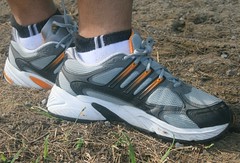XEROPHYTE
Plants that live in conditions where water is scare (for example in the desert)
MESOPHYTE
Land plants living in environment with moderate amount of moisture.
HYDROPHYTE
A plant adapted to grow in water.
Transverse Section of a Mesophyte Leaf
Transverse Section of a Xerophyte Leaf
Transverse Section of a Hydrophyte Leaf

Notice the adaptations of the Xerophyte and the Hydrophyte leaves?
- Xerophyte leaf needs to conserve as much water as possible so it tends to curl so as not to expose the stomata. So the stomata is hidden inside the curl inner side of the leaf. Apart from this, it has a very thick waxy cuticle and some may even have leaf hairs. Generally leaves of the xerophyte are succulent to store water as much as possible.
- Hydrophyte leaf needs to be able to float so that it can trap as much light energy from the sun as possible. To enable it to float the leaf has unusually large intercellular air spaces for storing air which in turn provides BUOYANCY. Apart from this, the stomata can be found on the upper surface (unlike the mesophyte - the stomata are found on the lower surface of the leaf).














